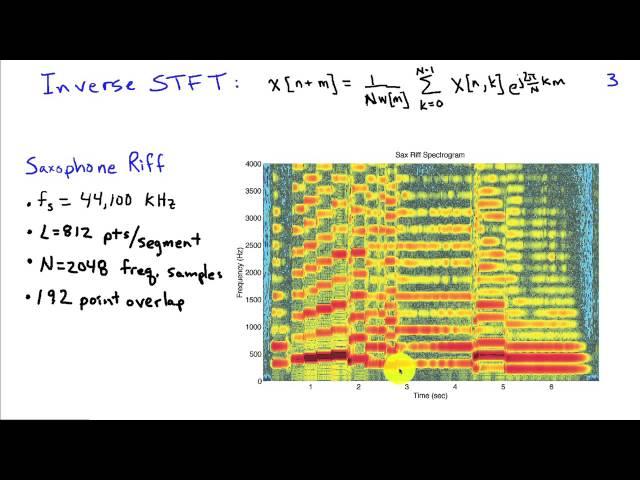
Short-time Fourier Transform and the Spectogram
Комментарии:

Great video! Nice explanation for window the data, comprehension about formula that is used and it is just so easy to understand your point of view. Congrats, you are a good professor.
Ответить
This was very helpful, thank you!
Ответить
Good Explanation Thank you!
Ответить
Great explanation thank you
Ответить
WOW now I see it clearer! One question just to know, in the formula could it be x[n-m] instead of x[n+m] to advance the signal x forward? thank u.
Ответить
Can we get information for the phase of specific frequency? Thanks!
Ответить
This has been implemented in Matlab as spectrogram() function.
How do we determine the optimal window size?
How does overlap affect the frequency-time resolution?
Thank you.

fs = 44.1 kHz
Ответить
great!
thanks :)

Great Explanation, thanks!
Ответить
excellent
Ответить
amazing!!!!! thank you
Ответить
Arent you the man who co-authored Simon Haykin's signal and systems book ?
Ответить
very good. Thank you for that
Ответить
Wonderful lecture! Thank you very much Sir.
Ответить
what is the different n and m? may i have your email, sir?
Ответить
I am looking for a relation between length of a window and bandwidth of the filter. Any clues/hints?
Ответить
Can we "hack" the "no free lunch here" problem by getting lets say 128 samples and pad them with zeros up to 2048 and then take FFT? Wouldn't it give us bigger resolution and better "dynamics"?
Ответить
wow
Ответить
thank you so much!
Ответить
Hi Mr. Van Veen
could you please help me with this question?
Develop a sliding DFT algorithm and compute sliding DFT for x(n) = [0,1,2,3,4,5]. if sliding window length-4.

what is the different between L and N in the saxophone riff section? doesnt N suppose to have the same number as sampling rate?
Ответить
Even though I am a wavelet guy, I can still appreciate short time fourier transform.
Ответить
Excellent Explanation. Thanks from Colombia
Ответить

























